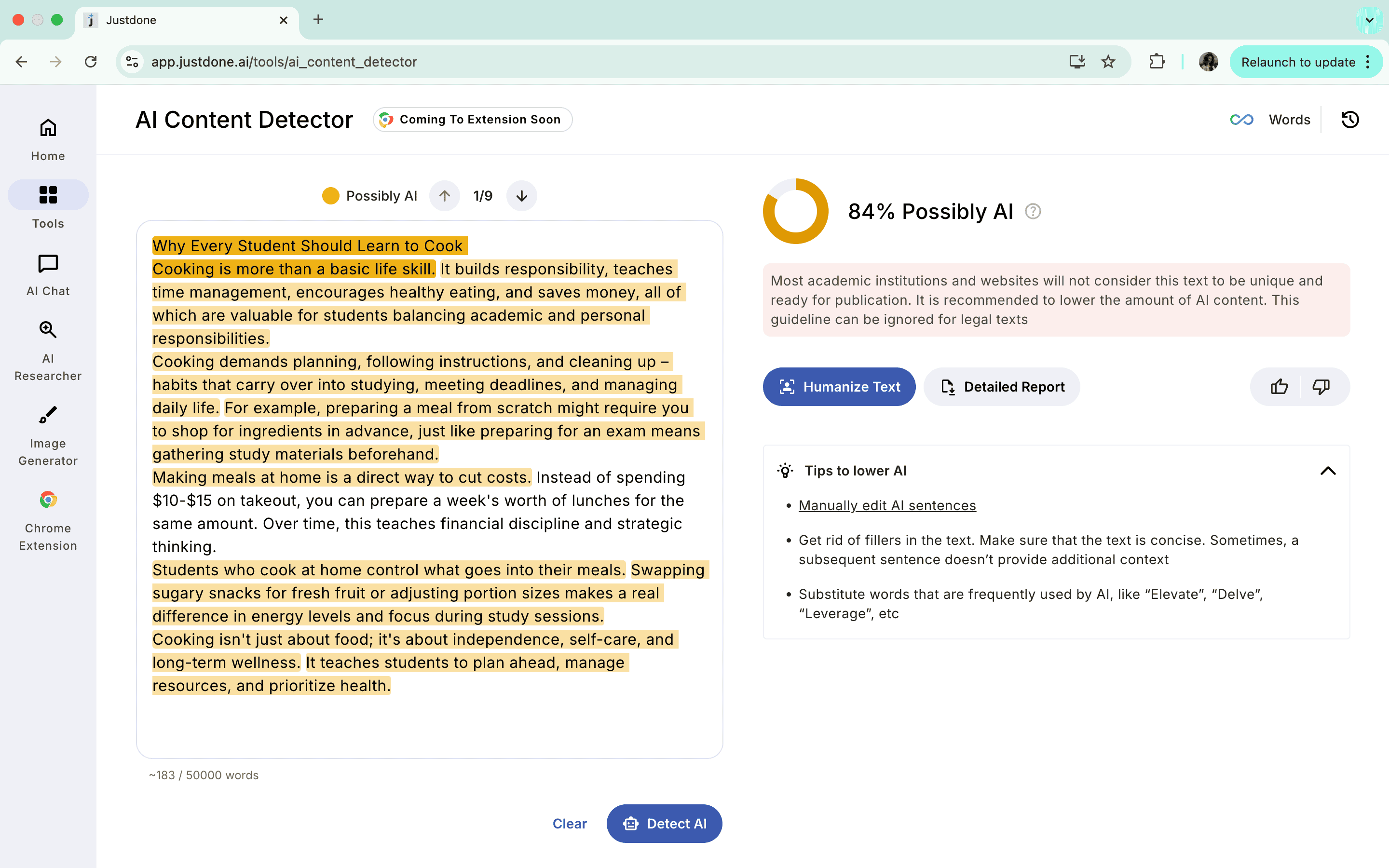As someone who's worked closely with both students and educators, I've seen it a hundred times: the five-paragraph essay shows up on a syllabus, and half the room groans. On the surface, it feels like a formula. But here's what I've found: when you understand how and why it works, the five-paragraph essay structure becomes a solid foundation for better writing, not a creative prison. Especially when smart AI-powered writing assistants like JustDone are by your side.
Let’s unpack the five paragraph essay structure, talk about real transitions between paragraphs (the kind that don’t feel forced), and look at how you can make this format work for your writing, not against it.

What is Five Paragraph Essay Structure?
I've worked with students who dreaded the format, thinking it was too rigid. In reality, the five paragraph essay structure gives clarity and focus to your argument. It's built around three main sections: an introduction, three supporting body paragraphs, and a conclusion. Once you know how each part functions, you can adapt it to almost any writing scenario: exams, application essays, presentations, or reports.
Think of it like building a sandwich. The intro is your top slice of bread (set the topic, present your thesis), the three body paragraphs are the filling (each one supporting your argument), and the conclusion is the bottom slice (tying everything together without falling apart).
How to Start a Five Paragraph Essay with Impact
The opening of your essay matters. When figuring out how to start a five paragraph essay the right way, think of the introduction as your essay's hook and brief roadmap of what you're going to say next.
Basically, the introduction should grab attention, present your thesis, and guide the reader into your main points. In fact, if you've ever wondered which part of the five paragraph essay serves as a mini-outline of the essay, this is it - your thesis statement at the very beginning.
Here's where JustDone's brainstorming and paraphrasing tools are especially useful. You can feed in your rough introduction and ask for alternative ways to phrase your hook or tighten your thesis. This lets you quickly compare versions and choose one that feels powerful and authentic while keeping the five parapgraph essay structure unchanged.
Smooth Transitions Between Paragraphs
Let’s talk about a part of the essay most students struggle with: transitions.
A lot of writing advice suggests using words like "furthermore," "moreover," or "in contrast." While those can help, transitions aren’t just vocabulary tricks. They’re about connecting ideas.
Here’s how to make your transitions smoother:
- Use echo phrasing; link the end of one paragraph to the beginning of the next. For example, “Time management is one reason students perform better. Another key factor is motivation.”
- Ask a question at the end of a paragraph. This leads readers directly into the next. For instance, “But what happens when focus is lost—how does it affect academic success?”
- Refer back to your thesis each time. It reminds readers where you’re going and keeps your argument grounded.
When I review drafts with students, I always suggest reading the transitions out loud. If something feels clunky or disconnected, your reader’s going to feel it, too. I’ve even used JustDone’s AI sentence rewriter when I’m stuck—it helps identify smoother phrasing without redoing your whole paragraph.
Five Paragraph Essay Example You Can Learn From
Let's break down a five paragraph essay example with more depth so you can see how the structure works in practice. I recommend doing this on the following example generated with ChatGPT:
Your topic is “Why Every Student Should Learn to Cook.” This can be your introduction:
Cooking is more than a basic life skill. It builds responsibility, teaches time management, encourages healthy eating, and saves money, all of which are valuable for students balancing academic and personal responsibilities.
The first paragraph of your essay depicts the idea of responsibility:
Cooking demands planning, following instructions, and cleaning up – habits that carry over into studying, meeting deadlines, and managing daily life. For example, preparing a meal from scratch might require you to shop for ingredients in advance, just like preparing for an exam means gathering study materials beforehand.
The second paragraph is about budgeting as another benefit of cooking at home:
Making meals at home is a direct way to cut costs. Instead of spending $10-$15 on takeout, you can prepare a week's worth of lunches for the same amount. Over time, this teaches financial discipline and strategic thinking.
The third paragraph is about health benefits:
Students who cook at home control what goes into their meals. Swapping sugary snacks for fresh fruit or adjusting portion sizes makes a real difference in energy levels and focus during study sessions.
Finally, a conclusion:
Cooking isn't just about food; it's about independence, self-care, and long-term wellness. It teaches students to plan ahead, manage resources, and prioritize health.
Do you see? Each paragraph connects back to the thesis and focuses on a single main idea. The transitions are natural, not robotic, and the flow makes sense even without flashy vocabulary.
How to Avoid AI Detection in a Five Paragraph Essay
Even the most carefully written essay can trigger an AI detector. Sometime, it happens accidentally, sometimes, it's because you use AI to brainstorm or to write your draft. That's why I always recommend running your final draft through a tool like JustDone's AI Detector.
Here's how it works: after pasting your text, the detector analyzes your writing for patterns common to AI-generated content, such as uniform sentence length, low variance in word choice, weird or overly formal phrasing. Then, it provides a percentage likelihood of AI authorship, along with specific flagged phrases. As you can see, the five paragraph essay example I generated with ChatGPT is flagged as 84% AI-generated.

For example, if your essay contains too many sentences starting with “However” or “Moreover”, or if the vocabulary seems excessively academic despite context, the AI checker will highlight these spots.
As a solution, you can send this text to JustDone's AI Humanizer, which rephrases while keeping your meaning the same and making the overall writing feel more natural and human.
As for me, using this two-step process – detect and then humanize – ensures your essay is both structurally correct and stylistically authentic.
Final Thoughts on the Five Paragraph Essay
Learning how to write a five paragraph essay is about more than memorizing a formula. It's about understanding essay structure so well you can adapt it easily when needed. If you approach it like building a case, point by point, you can make your ideas stand out. Transitions matter. Focus matters. And when you combine structure with clear reasoning, your writing becomes something people actually want to read.
And if you’re ever stuck mid-draft, don’t be afraid to get a little help. I’ve used JustDone’s tools myself during edits, especially when I need a second opinion that doesn’t miss a beat. Master the format, and you’re not just writing essays; you’re building confidence in your voice.